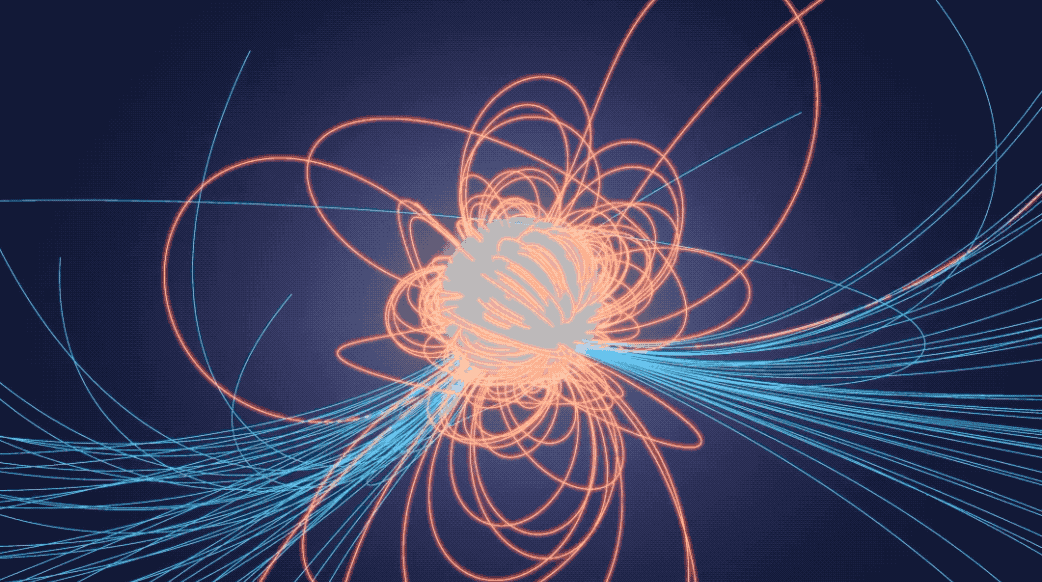Scientists have created the first "hotspot" map of the surface of a strange star, thanks to a telescope on the International Space Station.
The Neutron star Interior Composition Explorer (NICER) got a view of a pulsar, a fast-rotating remnant of an exploded star. With these observations, scientists found that this pulsar, called J0030+0451 (or J0030 for short), has even weirder hotspots than they'd imagined.
Pulsars are the leftovers from huge stars that collapsed under their own gravity during supernova explosions. A pulsar's magnetic field is typically shaped like the curves generated from a household bar magnet, scientists suggest.
Related: NICER Telescope Spots Brightest X-Ray Burst Ever Observed
Additionally, pulsars have hotspots that glow in X-rays at their magnetic poles. That's because a pulsar's magnetism is so strong it can actually tear particles away from its own surface. A few of those particles follow the magnetic field lines and then slam into the other side of the object at its pole.
Yet, observations of J0030 show no hotspots at all in the pulsar's northern hemisphere — the only area of the pulsar we can see from Earth. Researchers ran simulations and found that up to three hotspots may appear in its southern hemisphere, but we can't say for sure which interpretation is correct.
One team attempted to re-create the X-ray signals "using overlapping circles of different sizes and temperatures," NASA said in a statement, and then running the results through a supercomputer. With this method, the team found two hotspots: a small, circular one and a larger, crescent-shaped long one. This work was led by Thomas Riley, a doctoral student in computational astrophysics at the University of Amsterdam.
Another team did the same thing, but used ovals of different temperatures and sizes and a different supercomputer. Their simulation came up with two equally possible solutions. The first solution suggested that there are two ovals in the same locations found by the first team. Alternatively, there could also be a fainter, cooler spot that is a little away from the pulsar's south rotational pole, lingering amid the two ovals. This team was led by Cole Miller, an astronomy professor at the University of Maryland.
"Previous theoretical predictions suggested that hot spot locations and shapes could vary, but the J0030 studies are the first to map these surface features," NASA added. "Scientists are still trying to determine why J0030's spots are arranged and shaped as they are, but for now it's clear that pulsar magnetic fields are more complicated than the traditional two-pole model."
Through independent measurements of J0030, these teams also arrived at similar results for the pulsar's mass and size: Riley's team determined that the pulsar is roughly 1.3 times the mass of the sun and 15.8 miles (25.4 kilometers) in diameter, while Miller's team estimated that J0030 is 1.4 times the mass of the sun and about 16.2 miles (26 km) in diameter.
Several papers about NICER's observations of J0030 were published in The Astrophysical Journal Letters, including the ones led by Riley and Miller.
- This Newfound X-Ray Pulsar Is Orbiting Its Partner at Record Speed
- Watch NASA's X-Ray-Hunting Pulsar Detector Do a Cosmic Dance in Space
- 'We Don't Planet' Episode 16: Pulsars
Follow Elizabeth Howell on Twitter @howellspace. Follow us on Twitter @Spacedotcom and on Facebook.

